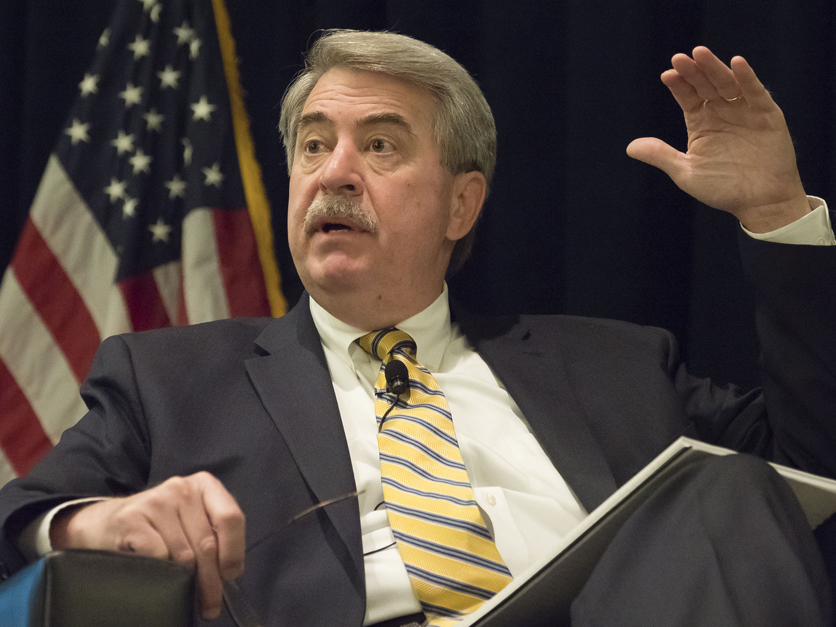USDA is scrambling to cobble together a new, multifaceted, trade aid package for farmers and ranchers suffering from Chinese tariffs, and Undersecretary for Trade and Foreign Agricultural Affairs Ted McKinney says it should be done in a matter of “days, not weeks or months.”
There will be both short-term benefits to farmers and ranchers, such as cash payments, as well as long-term help, such as new marketing assistance funds to give a boost to the ag sector, much like the $12 billion Market Facilitation Program unveiled by USDA last year, McKinney told journalists attending the National Association of Farm Broadcasting's annual Washington Watch.
“We’re working diligently — all of us,” McKinney stressed. “This is an all-hands-on-deck sort of thing.”
President Donald Trump has proposed in recent days to buy as much as $15 billion of farm commodities and donate them to developing countries. While some of the package may encompass some purchase-donations, that will likely only be a small part of it.
“Somebody is going to tell him he can’t do that because he’d be violating WTO rules,” Senate Finance Chairman Chuck Grassley, R-Iowa, told Agri-Pulse. “There’s humanitarian crises around the world but not $15 billion worth.”
The “only realistic way” to help U.S. farmers cope with the retaliatory tariffs is more direct payments like was done under the Market Facilitation Program, Grassley noted.
There will be similarities to the MFP, but differences as well. For example, payments could be based on acres rather than bushels. But USDA officials were reluctant to provide details, noting that the package was still a work in progress.
“The … portfolio is going to be very diverse," McKinney said. “I don’t want to get into the specifics, but it’s all of the above. We’re still finalizing it so some pieces may come and go … but we’re looking at all those things.”
When it comes to purchases, Ag Secretary Sonny Perdue offered other difficulties.
Perdue, who is currently in Japan, was quoted by Bloomberg, saying: “I cannot say for sure right now when purchases of those kinds of products will take place. We have to look at the seasonality of all the crops across the spectrum and agree on which are hurt and damaged by China’s decisions.”
As to the timing, Perdue also said a package could be complete in a matter of days, but there is a possibility it could take longer.
The rush to put together the new trade aid package comes after talks with China fell apart earlier this month and before a scheduled upcoming meeting between U.S. President Donald Trump and Chinese President Xi Jinping on the sidelines of a G-20 summit in Japan, scheduled for June 28-29.
Trump, who has recently repeated his call for special aid for the U.S. ag sector, wants to send messages to American farmers and Chinese negotiators. The message to farmers, McKinney said, is “we’ve got your back.” The message to China is that they can’t bully the U.S. by hurting farmers with tariffs.
It was after a round of negotiations earlier this month in Beijing that the U.S.-China talks appeared to fall apart. Trump and U.S. Trade Representative Robert Lighthizer accused China of “reneging” on several major pledges and then raised the rate of U.S. tariffs on $200 billion worth of Chinese goods from 10 percent to 25 percent. China retaliated this week by increasing tariff rates on $60 billion worth of U.S. goods.
Ben Nuelle and Phil Brasher contributed to this report.
For more news, go to: www.Agri-Pulse.com


